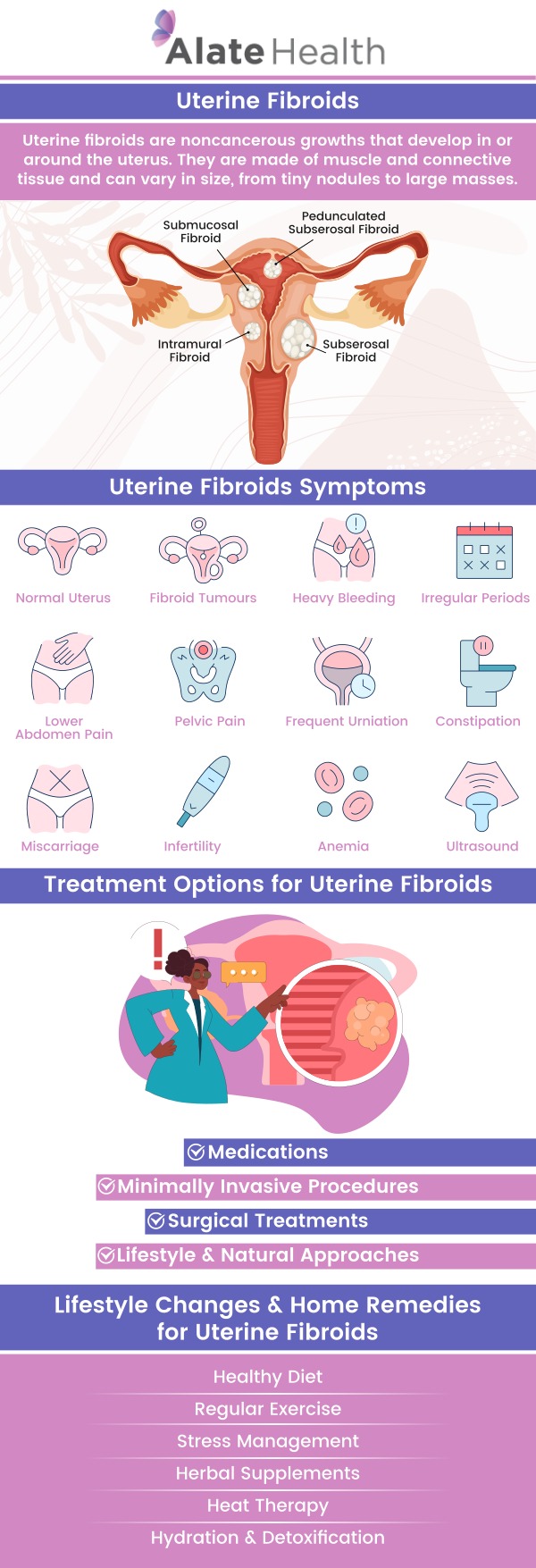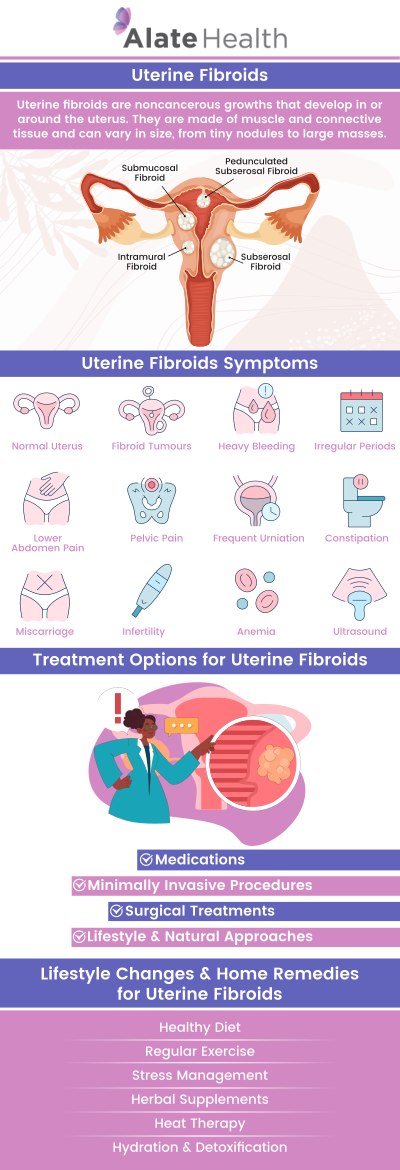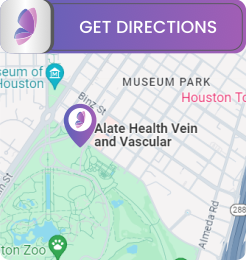Uterine Fibroids Treatment Specialist in Houston, TX
Uterine fibroids are common, noncancerous muscle and tissue growths in the uterus that often develop during a woman’s reproductive years. They may cause excessive menstrual bleeding, pelvic pain, abdominal pressure, and frequent urination. Dr. Andrew Doe, MD, at Alate Health Interventional Radiology Clinic, provide treatment to manage symptoms and provide relief to patients who are concerned about the effect they have on their health. For more information, contact us today or book an appointment online now. We are conveniently located at 1213 Hermann Dr Suite 255, Houston, TX 77004.




Table of Contents:
What are uterine fibroids?
What causes uterine fibroids?
Is it worth getting fibroids removed?
How are uterine fibroids treated?
A prevalent gynecological condition, uterine fibroids frequently impact women’s health. These non-cancerous growths develop within or on the uterus. Uterine fibroids vary in size, from as small as a seed to large masses that can distort and enlarge the uterus. They are most commonly found in women of childbearing age and are influenced by hormonal changes, particularly estrogen and progesterone.
Often, women with uterine fibroids do not experience any symptoms. When symptoms do arise, they may include prolonged periods, heavy menstrual bleeding, pelvic pain or pressure, pain during intercourse, frequent urination, and back or leg pain. Large fibroids can cause noticeable swelling in the lower abdomen.
In addition to these symptoms, uterine fibroids can lead to problems during pregnancy, such as preterm labor or miscarriage. Fibroids can also cause infertility, and removing them may improve fertility in some cases.
To diagnose uterine fibroids, your doctor will conduct a pelvic examination, perform an ultrasound, and may order an MRI to confirm the diagnosis. If you are experiencing the symptoms of uterine fibroids, it’s essential to book a visit with a healthcare professional to receive an accurate diagnosis and effective treatment.
Healthcare professionals believe that estrogen and progesterone play a large role in the development of uterine fibroids. This condition is most common when hormone levels are higher, such as during pregnancy.
While the specific cause of uterine fibroids is still being determined, several risk factors have been identified as contributing to their development, including:
– Family history of fibroids.
– Obesity or high body mass index.
– Early onset of menstruation.
– Late onset of menopause.
– Not having children.
In certain cases, it is beneficial to get uterine fibroids removed. Your doctor will consider the size, location, and number of your fibroids, as well as the nature of your symptoms, before advising removal. For example, if you are experiencing disruptive symptoms such as pelvic pain and heavy menstrual periods, uterine fibroid removal is worth considering.
In addition, as fibroids can result in infertility or recurrent pregnancy loss, removing them improves the chances of conception and a healthy pregnancy in some cases. If you are experiencing problems with your reproductive health due to fibroids, your doctor may advise you to explore removal options.
For uterine fibroids, there are a variety of treatments available, with the right approach depending on the size and number of fibroids as well as their effects on your wellness. In cases where uterine fibroids are causing no symptoms, your doctor will likely recommend a watchful waiting approach. As fibroids aren’t cancerous and tend to shrink after menopause, monitoring them may be the best option.
If your fibroids are causing pelvic pressure or heavy menstrual bleeding, your doctor may prescribe medication to alleviate your symptoms. For instance, gonadotropin-releasing hormone (GnRH) agonists are often prescribed to shrink the size of uterine fibroids. Additionally, while GnRH antagonists do not shrink fibroids, this medication may be prescribed to address heavy bleeding in patients who have not reached menopause yet. Low-dose birth control pills or tranexamic acid may also be recommended to ease heavy periods.
Uterine fibroids can be treated through minimally invasive approaches such as radiofrequency ablation or uterine artery embolization. These approaches allow for a faster recovery than traditional, open techniques like myomectomy or hysterectomy.
In a myomectomy procedure, a specialist surgically removes fibroids while preserving the uterus. Myomectomy is suitable for patients who wish to maintain their fertility. Hysterectomy, which involves removing the uterus, is considered for severe cases or when less invasive treatments have failed and is the only option that completely prevents fibroid recurrence.
To understand your treatment options, as well as the benefits, considerations, and cost of each approach, you should book an appointment with a reputable uterine fibroid specialist. The skilled healthcare providers at Alate Health Interventional Radiology Clinic in Houston, Texas, can assess your concerns and determine the best treatment approach in your circumstances. For more information, contact us today or book an appointment online now. We are conveniently located at 1213 Hermann Dr Suite 255, Houston, TX 77004. We serve patients from Houston TX, Bellaire TX, Jacinto City TX, Spring Valley Village TX, Stafford TX, Bunker Hill Village TX, and surrounding cities.
NON-SURGICAL FIBROID TREATMENT
When it comes to treating your fibroids, you have options. The uterine fibroid specialists at Alate Health offer Uterine Fibroid Embolization (UFE), a 45-minute, minimally invasive procedure that shrinks fibroids and alleviates symptoms.

Additional Services You May Need
▸ Adenomyosis
▸ Enlarged Prostate
▸ Leg Ulcers
▸ Joint Pain
▸ Varicose Veins
▸ Uterine Fibroids
▸ Pelvic Congestion
▸ Vascular Malformations
▸ Dialysis/Renal Failure
▸ Port and PICC Placements
▸ Peripheral Arterial Disease
▸ Primary and Metastatic Liver Cancers
▸ Hemorrhoid Artery Embolization (HAE)







